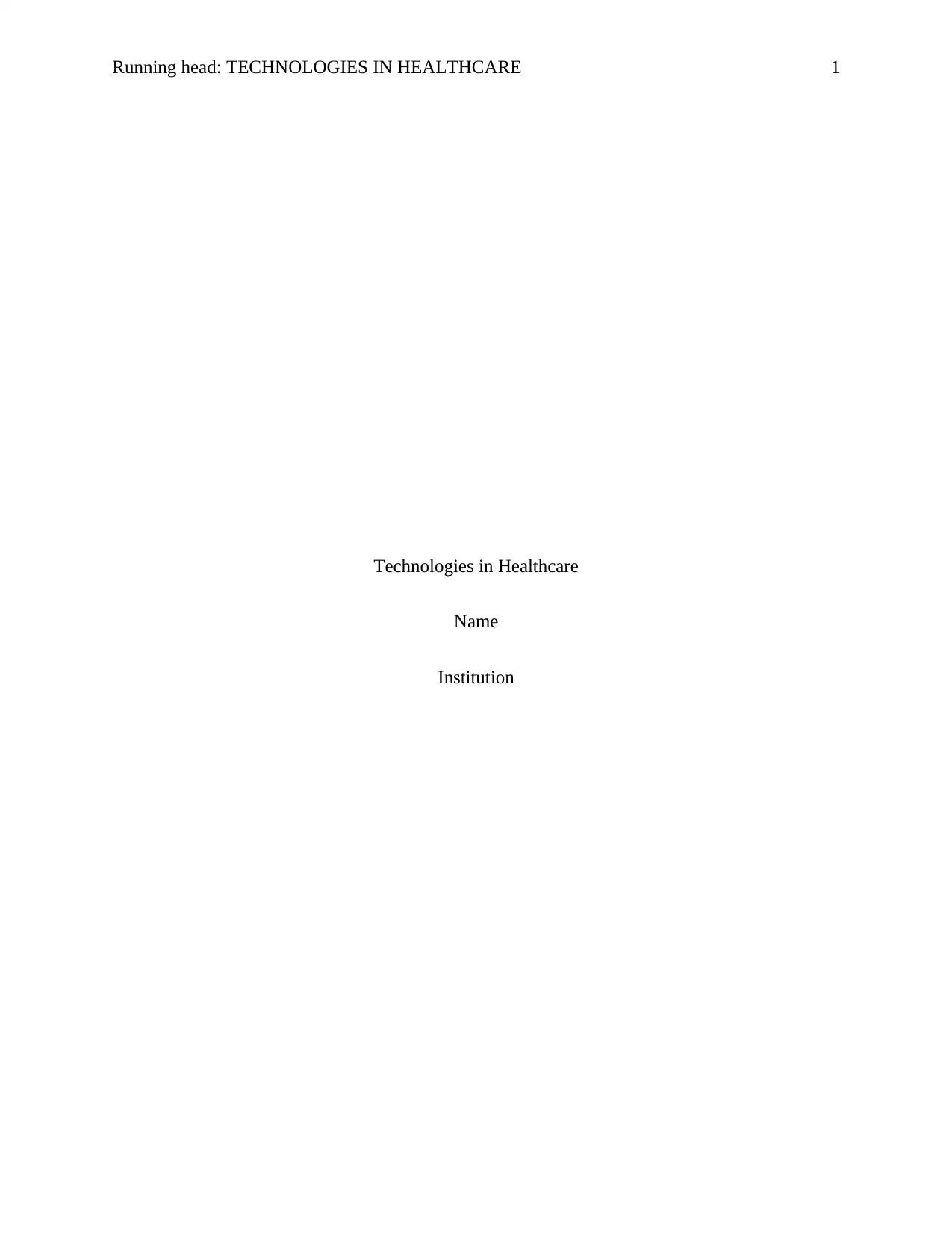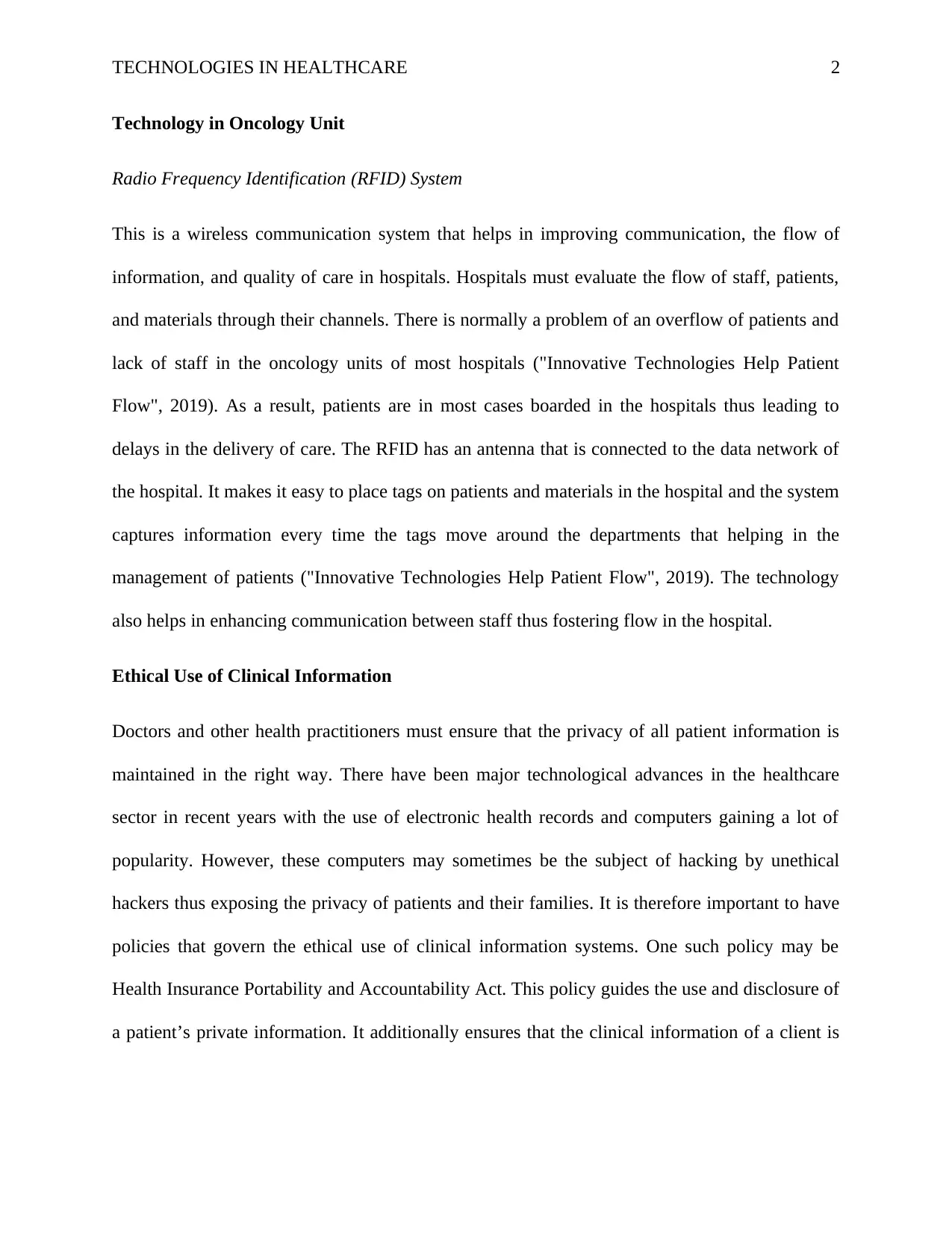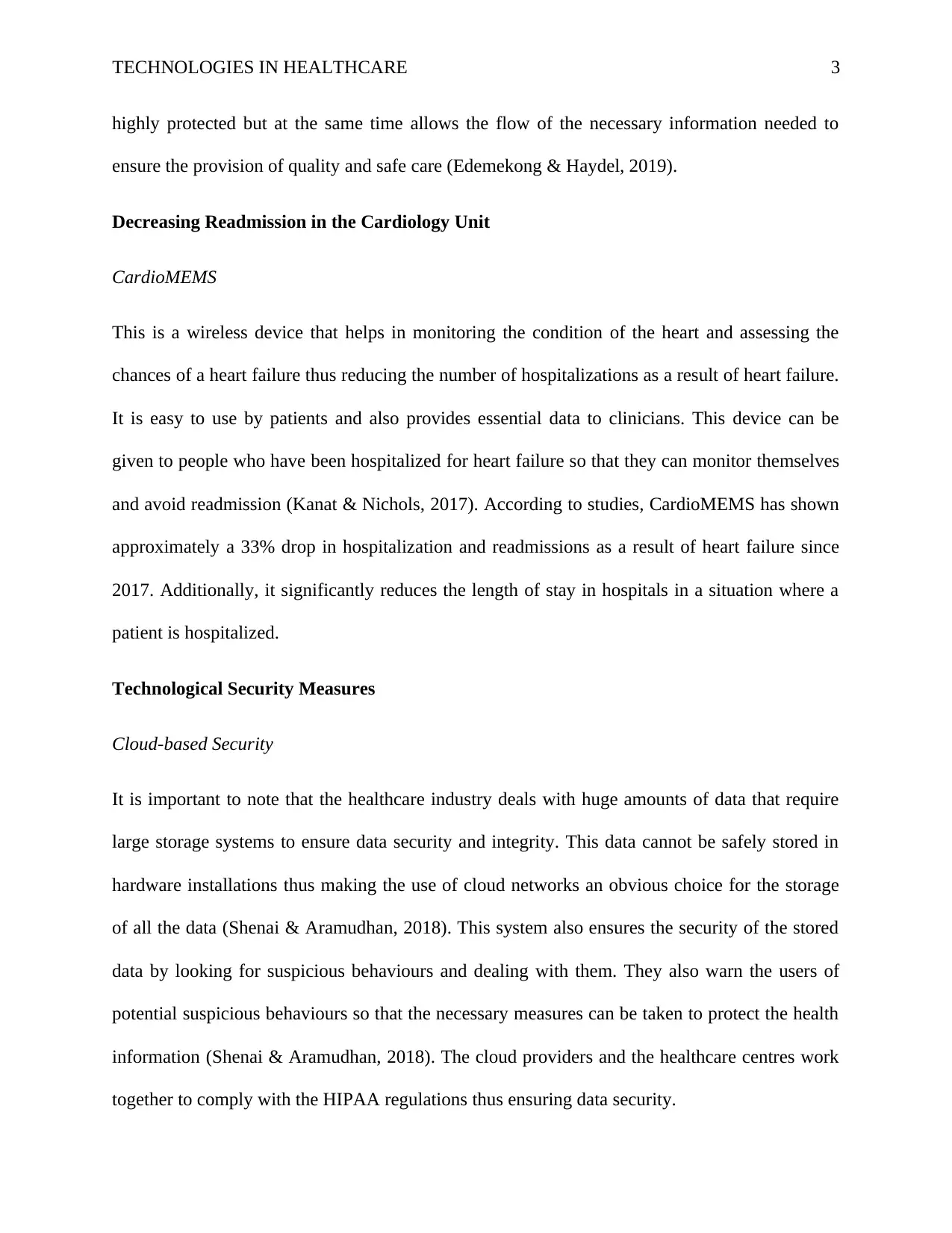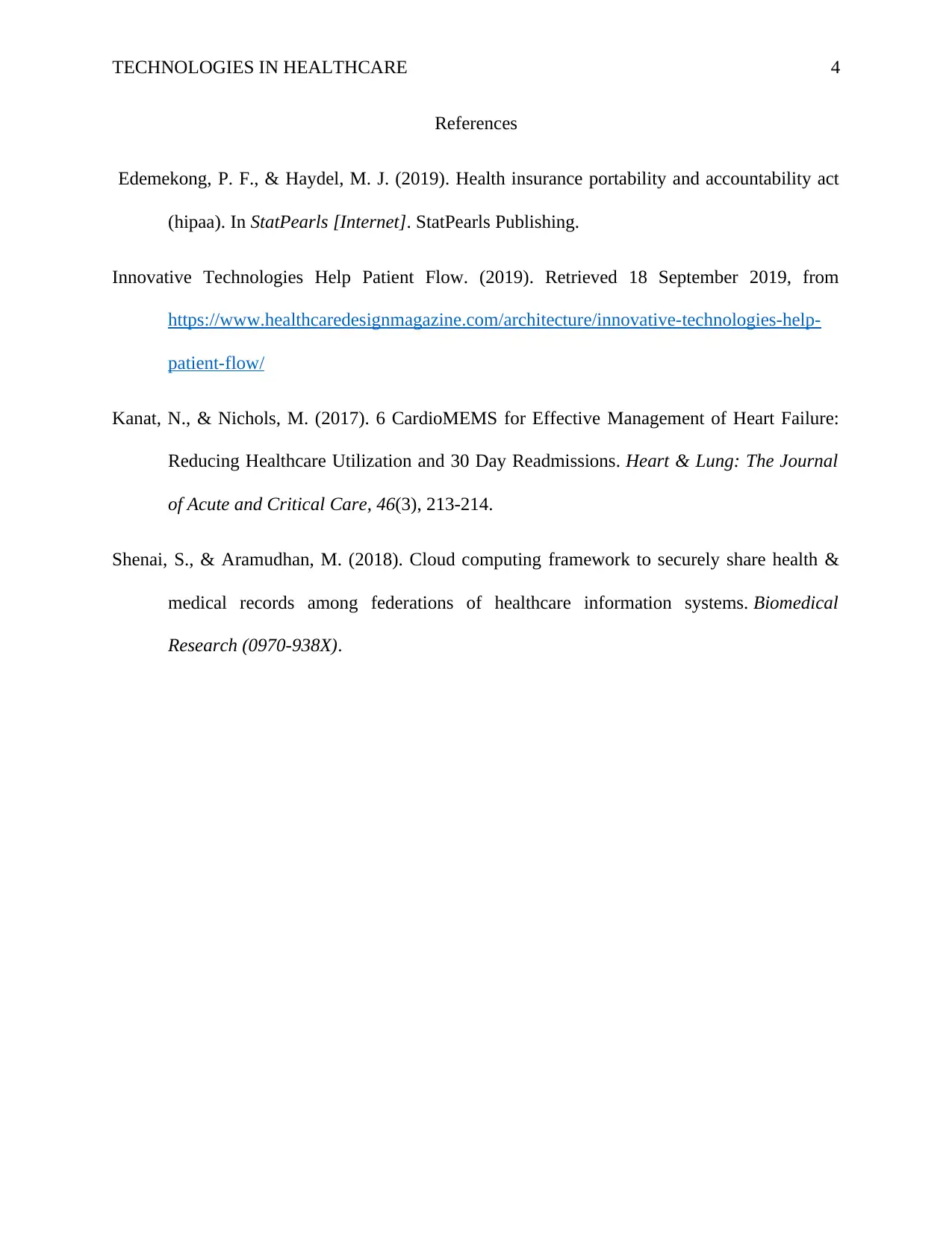Healthcare Technologies Report: Security and Patient Care
VerifiedAdded on 2022/10/19
|4
|773
|14
Report
AI Summary
This report examines the application of innovative technologies in healthcare to enhance patient care and streamline hospital operations. It begins by analyzing the use of Radio Frequency Identification (RFID) systems to improve patient flow and communication within oncology units, addressing issues of overcrowding and staff shortages. The report then delves into the ethical considerations surrounding the use of clinical information systems, emphasizing the importance of policies like the Health Insurance Portability and Accountability Act (HIPAA) to protect patient privacy. Furthermore, it recommends the use of CardioMEMS, a wireless device, to monitor heart conditions and reduce hospital readmissions for heart failure patients. Finally, the report discusses cloud-based security measures as essential for safeguarding the vast amounts of patient data generated in the healthcare industry. The report provides evidence-based recommendations for improving healthcare delivery through technology.
1 out of 4











![[object Object]](/_next/static/media/star-bottom.7253800d.svg)